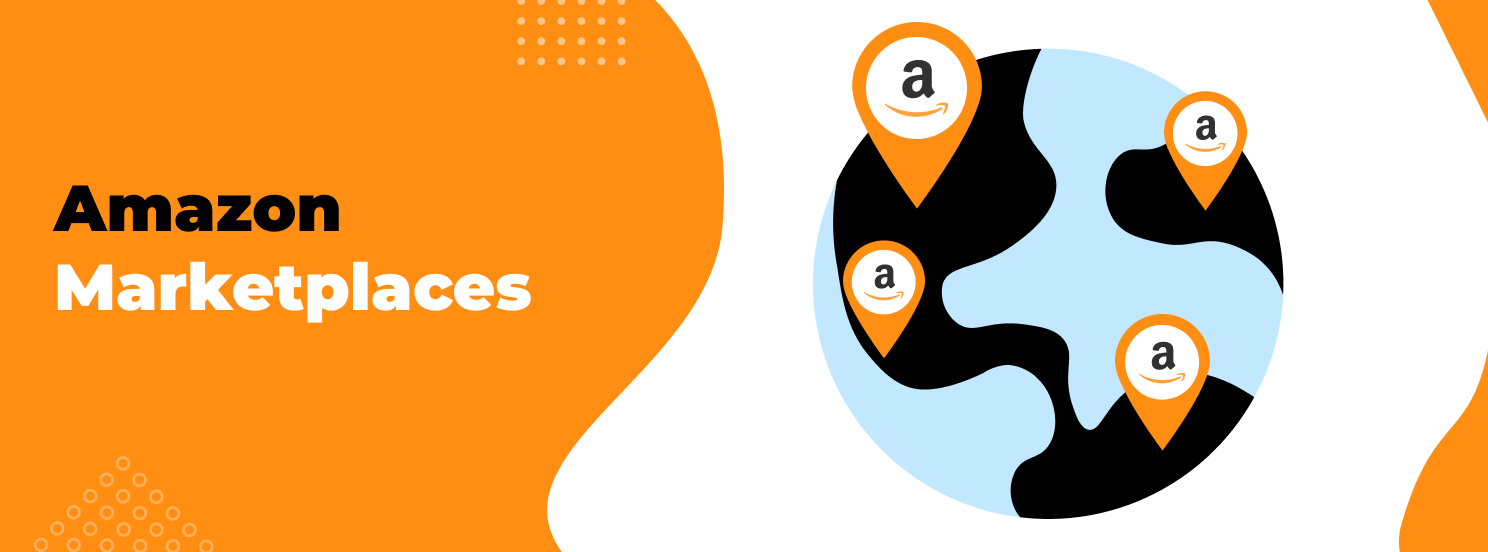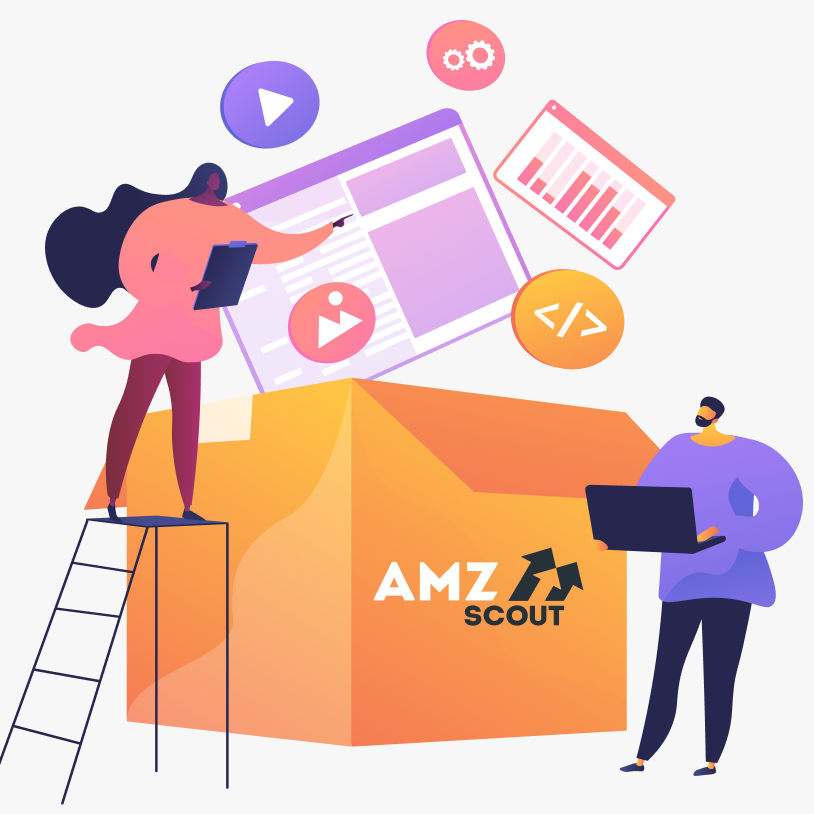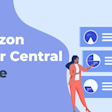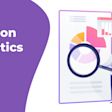Amazon Marketplaces: Selling in International Markets

As of 2022, among online marketplaces, Amazon's reached 2 billion people, making it the most prominent eCommerce provider globally. Other than Asia, Amazon dominates most markets with its plethora of third-party sellers on Amazon Marketplace. Its worldwide impact is second to none.
If you want to become part of the world's most customer-centric company, you aren't alone. Amazon has nearly two million active sellers on the platform. If you want to sell globally using Amazon, you need a competitive strategy.
Table of contents
This article will address the process of selling internationally on Amazon and its different international impacts so you know where you can sell effectively.
What Countries Does Amazon Work In?
Amazon operates in over 58 countries, with 16 countries having dedicated internet stores. These online stores are broken down into four regions:
Europe
Asia-Pacific
Middle East
Americas
Most online orders are done in Europe and America, where Amazon is most popular. Most struggles come from people being unable to speak the local language.
Amazon addresses those limitations through the following tools:
The Seller Central Language Switcher - Seller Central enables you to easily switch to your native language, making it easier to navigate the dashboard.
Amazon European Marketplaces Account - Sellers in Europe (EU) are automatically enrolled to sell across all European stores (i.e., co.uk, de, fr, etc.)
Amazon FBA Customer Support - FBA (Fulfillment By Amazon) sellers may rely upon Amazon to provide customer support in the local languages of areas you target.
Amazon still requires you to provide customer support in the language of any area you target if you manage your storage and logistics as an FBM (Fulfillment By Merchant) Seller.
You also need to be aware of any country you sell in the local tax and regulation requirements. Our next section will delve into the 16 primary countries Amazon operates in.
A Complete List of Amazon's International Marketplaces
You'll notice that the complete list of Amazon's international marketplaces includes two additional locations: CN (China) and SA (Saudi Arabia).
Both China and Saudi Arabia have unique challenges that exclude them from the general list. We will discuss why those challenges exist in later sections.
Amazon.com - The United States
Amazon.com is the US's fourth most searched in the United States and number twelve globally. Other countries often redirect from the .com website.
Amazon.com has hundreds of product categories to sell everything from computers to pet beds. The high number of categories makes it relatively simple to remain competitive and grow your store brand.
Amazon.ca - Canada
Amazon.ca is the fifth most searched site in Canada and number one in the eCommerce category. As the other half of North America, Amazon has many product categories you can target.
Canadian eCommerce is relatively similar to the United States. However, you'll find notable differences between brand design and product popularity worth being aware of.
Amazon.co.uk - United Kingdom
Amazon holds the same amount of power in the United Kingdom. Being fourth in the country and number one in the eCommerce category ensures Amazon has the most popular online shopping experience among the three countries.
The United Kingdom does ship products that others do not, as it is one of the few popular Amazon sites that handle beer. However, you cannot export beer through Amazon, so stick with less tricky items to ship.
Amazon.de - Germany
Amazon.de (Deutschland) is Germany's answer to Amazon, holding the same amount of popularity as the fourth most popular website in the country. It is second only to Amazon.co.uk as the most popular store in Europe.
Amazon Germany is perfect for targeting numerous countries with a high density of German speakers. Belgium, the Netherlands, and Switzerland are all great examples.
Amazon.fr - France
Amazon.fr is the fifth most popular website in France and the number one eCommerce destination. Its second most likely visitors come from Belgium.
This site has excellent potential crossover with Amazon.ca, as both have strong French-speaking locations. However, it is better suited towards targeting European areas as a multi-lingual eCommerce specialist.
Amazon.it - Italy
Italy follows suit with all countries so far with Amazon.it being the most popular eCommerce destination in the country. Almost 95% of its shoppers are in Italy, with seconds coming across Germany and Switzerland.
As you might expect, this target is only suitable for companies who speak Italian. Otherwise, only FBA sellers might benefit from targeting this country.
Amazon.es - Spain
Amazon.es is number seven in the country and number one on eCommerce. Amazon continues to dominate all European locations with this addition.
Those who target here are also likely to get a few sales from Portugal. This target also has solid crossover with targeting Amazon.mx (Mexico).
Amazon.nl - Netherlands
Amazon.nl represents the Netherlands, breaking the trend by being the third-largest eCommerce site and the 26th most popular site. So is it worth targeting the Netherlands knowing Amazon doesn't dominate here as well?
The site still manages to get 22 million visits across the Netherlands and Belgium. As a result, it is a worthwhile target for some product categories.
Amazon.co.jp - Japan
Amazon.co.jp returns to what we are used to, showing number five in Japan and number one in eCommerce for the country. Almost 97% of traffic comes from within, so you would have to have a particularly compelling product to overcome local shopping.
With 600 million shoppers on here at any given time, the target is worth having. Japan is one of the more popular foreign markets to target.
Amazon.in - India
Amazon.in is in India, holding number five in the country and number one in eCommerce. Almost 3% of traffic comes from the US, with 92% inside the country.
Amazingly, Amazon also competes with Walmart here, as Flipkart is another one of India's largest providers. Still, Amazon holds more than 370 million searches in the country.
Amazon.com.au - Australia
The Australian version of Amazon ranks number 23 in the country and number two in eCommerce. It is one of the few locations where eBay remains a competitor against Amazon.
Most residents here speak English, so you only need to know Australian word variants if you target English-speaking countries. Amazon.com.au commands nearly 35 million in traffic.
Amazon.sg - Singapore
Singapore under Amazon.sg commands nearly 5 million total visits. It ranks number 52 in the country as the third most popular eCommerce destination.
Singapore also speaks English as its primary language but is smaller than other English-speaking countries. Finding a small niche here to target could lead to solid results.
Amazon.ae - United Arab Emirates
Amazon.ae is a product of the United Arab Emirates. The eCommerce site dominates this location by being number six in the country and the number one eCommerce destination.
The country primarily speaks English despite having a wide range of languages, including Hindi, Arabic, and Persian. Those who sell out of the US will want to know that the UAE dollar is worth 27 cents of USD.
Amazon.com.tr - Turkey
Turkey puts Amazon at number three among eCommerce providers, the 35th most visited website. About 28 million visitors are expected per month, putting Amazon at high potential.
Turkey has a far weaker currency compared to most other countries. So in targeting the country, be aware of that rate per your country's currency.
Amazon.com.mx - Mexico
The bottom half of North America is Mexico, ranking 17 in the country and ranking two among eCommerce sites. With Spanish being the dominant language, it is an excellent target for those who focus on the southernmost points of the United States.
It also works with Spain and Portugal, but the two countries use different dialects. The vast ocean between them makes the two incredibly different countries.
Amazon.com.br - Brazil
As the sole South American standout, Amazon's Brazil target is 21st in the country and number three for eCommerce. Brazil is a good number two for those who focus on targetting Spanish-speaking countries.
Be aware of currency conversion rates in any Spanish-speaking country. It is typically harder to profit from Brazil from other countries.
Amazon.cn - China
Amazon is still growing in China, showing number 156 among websites and at eCommerce rank number nine. If you are an Amazon Private Label Seller, you are more likely to see products from the country over importing.
Selling here can be nearly impossible given the low earnings potential and high government watchfulness. China is typically not a viable eCommerce target.
Amazon.sa - Saudi Arabia
Saudi Arabia is a controversial target for Jeff Bezos, with Amazon's website only appearing in 2020. Despite its newness, it has 6.69 million visitors, sitting at 59th in the country and 3rd on eCommerce.
The two issues that make Saudi Arabia a controversial target is Jeff Bezos's disagreement with the crown prince and the unfortunate death of Jamal Khashoggi, a Saudi Arabian journalist employed by an outlet Jeff Bezos owns: The Washington Post.
Moral issues should deter you from using this site.
Where to Expand?
The UK, Canada, and the US are the three best available spots to expand from a general perspective. All three countries cover a wide range of product categories and utilize English, making them easy for English speakers to expand to.
When you decide to expand, your decision should be based on these factors:
The popularity of a target niche in your desired country
The additional shipping costs you will need to take on
The rate of currency conversion that will result in a potential loss (Use The Amazon Currency Converter for Sellers in Seller Central)
The local regulations and taxes you need to address
International markets cover the gambit of what you are allowed to sell. Countries like Canada, the UK, and the US are entirely different in that matter.
This is especially true regarding grocery items, which are challenging to sell overseas. Ideally, you will want to target areas where Amazon is popular, taxes are reasonable, and shipping isn't ridiculous.
Below, we will delve into how you can apply those terms.
How to Sell Globally
1. Decide Where to Sell
Deciding where to sell should account for these factors:
Amazon sellers should receive regular attention due to Amazon's localized popularity
Taxes need to be reasonable for products that you sell
Shipping cannot cost a great deal to get into the country
If you are an FBM seller, you will need to use internal tools and your current shipping companies to determine costs. You'll want to weigh these based on existing sellers and how they do.
Using a combination of historical data tools and keyword research tools, you can get a reasonable estimate of this for your target country. If there isn't a transparent bridge to profit, you might want to go back to the drawing board.
Much of these prospective profits come back to what you plan on selling.
2. Find a Product to Sell
Finding a product to sell works the same across all areas. Typically, this means hitting the following targets if this is your first target:
Your product needs to weigh one or two pounds so that you can avoid paying high shipping costs
You need to have a product that isn't for seasonal use (gloves, mittens, etc.) and can be used every day in your target country
It would be best if you were sure your first product is not easy to break, so don't make it fragile or mechanical
Your product needs to have a measurable demand in a low-competition, high-demand sense
To determine whether a product is in high competition and low demand, you can use tools like AMZScout. The Pro Extension works across all of Amazon's country-specific sites.
Tools like this are meant to break down how many sellers are in the niche, the sales potential, and easy methods to find suppliers in one mix.
3. Register as a Seller
The registration process is similar across most areas. This will focus on registration specific to North American residents to simplify things.
You will need the following to register:
A valid credit card
Phone number
Tax information (Business identification number of identity confirmation)
Availability to go through an online interview
A physical address to confirm where they needed to send information
Banking details so that you might receive deposits
European registrants also require a VAT number for selling from or expanding to Europe. The Europe Selling Guide is an excellent resource for this.
Physical address confirmation is done through a postcard they send to you, and banking verification is done alongside general banking statements.
Once you get through all of this, you'll be able to login using your password and preferred email.
4. List Your Products
Listing creation requires four different areas of concern:
A Product ID (UPC, EAN, IBSN, GTIN) Amazon can use to confirm your product
A title describing your product in great detail alongside a detailed product description and bullet points
Product images around 1000 x 1000 px to meet Amazon's quality requirements. The primary picture needs a pure white background (RGB of 255, 255, 255).
Keywords within your product title, description, and bullet points describing how to search for your product
The Build International Listings Tool is necessary to modify your listing for each location you plan on selling. If you do not speak the local language, you will need to hire someone who does customer service in that language and a professional translator to convert your listing details.
Amazon will deny listings not in a localized dialect for sale to the country.
5. Ship and Fulfill
When shipping, you have one of two options:
FBA - Fulfillment By Amazon will handle the shipping and storage of items to any of your target locations. You will need to ship your items to a fulfillment center.
FBM - You handle the shipment and storage of all items. You will need to understand the details of international shipping in this case.
Because international shipping costs are far more expensive, you'll need to account for them. Both FBA sellers and FBM sellers are expected to pay more for the service.
FBA Exports is a program specific to help you through this. A crucial difference in international shipping is defining your product for international shipping clearly.
Product codes (like those from the Madrid System) are made to make the identification process simple, especially if you sell trademarked goods. Your interests won't make it through customs without a clear product code and serial bar.
This is no different for FBA sellers, but Amazon global FBM sellers take on more costs.
6. Manage Your Business
When managing your business overseas, remember the basics: provide good customer service. Respond to negative reviews quickly, and don't forget to have a customer service specialist in your target country's most popular language.
If you are an FBA Seller, Amazon will handle all returns for you. You can even request a restocking fee if the customer returns for no reason, but you might have to take a customer review in those cases, so pick your battles wisely.
Be sure to greet your customer using the local language. Product inserts are a great way to thank anyone for buying your product. General messaging rules still apply across all countries, so do not contact them unless they contact you.
Conclusion
Through Amazon, selling to international markets is more accessible, but it is still no cakewalk. You need to be aware of local taxes, regulations, and cultural differences. At the bare minimum, you need to have someone who speaks the local language.
So the next time you ask, "what is Amazon Marketplace," remember that it includes a vast array of worldwide sellers. If you want to be one of those worldwide sellers, you need to research and remain competitive.





